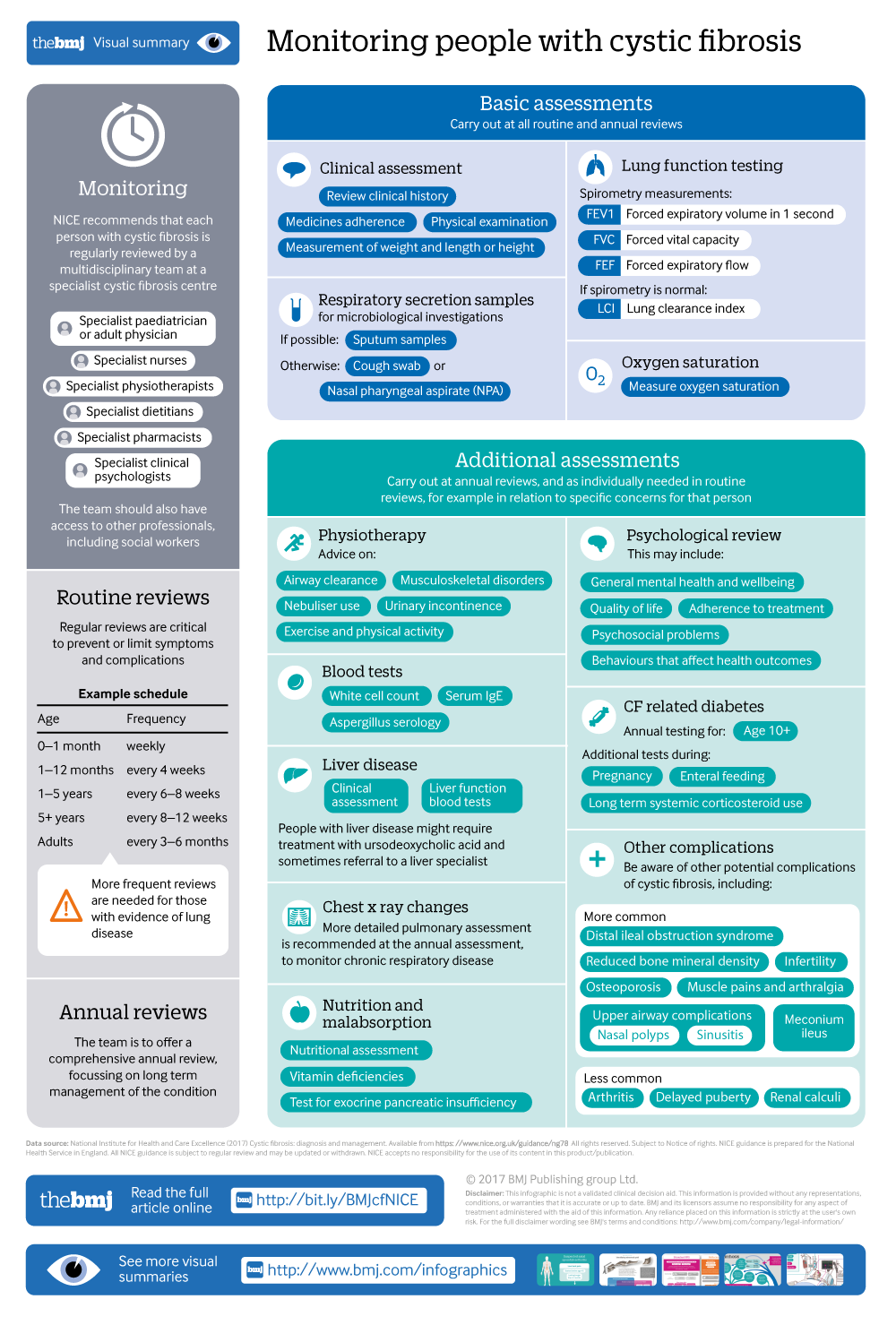Diagnosis and management of cystic fibrosis: summary of NICE guidance
BMJ 2017; 359 doi: https://doi.org/10.1136/bmj.j4574 (Published 26 October 2017) Cite this as: BMJ 2017;359:j4574
Infographic available
A visual summary of monitoring and assessment approaches for people with cystic fibrosis
- Gemma Villanueva, senior systematic reviewer1,
- Gemma Marceniuk, health economist1,
- M Stephen Murphy, clinical adviser1,
- Martin Walshaw, chair of guideline committee and honorary professor of medicine2,
- Rami Cosulich, systematic reviewer1
- on behalf of the Guideline Committee
- 1National Guideline Alliance, Royal College of Obstetricians and Gynaecologists, London
- 2Regional Cystic Fibrosis Clinic, Liverpool Heart and Chest Hospital, University of Liverpool, UK
- Correspondence to: Rami Cosulich RCosulich{at}rcog.org.uk
What you need to know
Some people with cystic fibrosis (including adults) are undiagnosed because they missed the newborn screening process; they carry less common cystic fibrosis mutations; or have atypical manifestations of cystic fibrosis
Common complications associated with cystic fibrosis that might be identified in primary care include malnutrition, liver disease, infertility, and reduced bone mineral density
Forced expiratory volume in 1 second (FEV1) is the typical measure of lung function and a key predictor of life expectancy in people with cystic fibrosis
Optimising lung function is a major goal in cystic fibrosis care
Exercise is advised in cystic fibrosis to help maintain and slow the decline in respiratory function, facilitate airway clearance techniques, help improve bone mineral density, and to increase and maintain muscle strength, flexibility, and posture
Cystic fibrosis is a life limiting autosomal recessive disorder that affects up to one in 2500 babies born in the UK. It is caused by mutations in the cystic fibrosis transmembrane conductance regulator protein, which acts at the cell surface in all mucus producing organs in the body. It is a multisystem disorder, affecting the lungs, pancreas, liver, and intestine. It is usually diagnosed in the UK through a neonatal screening programme, although diagnosis can be made later, and even in adult life.1 The median age at diagnosis is 2 months.1 In the past, when early death was common, cystic fibrosis was uncommon in adults, but with improved management this is no longer the case in more developed countries. However, in low income countries, mortality in childhood is still high.2 At present, more than 60% of people on the UK cystic fibrosis registry are aged over 16.1
This article summarises the recent National Institute for Health and Care Excellence (NICE) guidance on the diagnosis and management of cystic fibrosis in children, …
Log in
Log in using your username and password
Log in through your institution
Subscribe from £173 *
Subscribe and get access to all BMJ articles, and much more.
* For online subscription
Access this article for 1 day for:
£38 / $45 / €42 (excludes VAT)
You can download a PDF version for your personal record.
